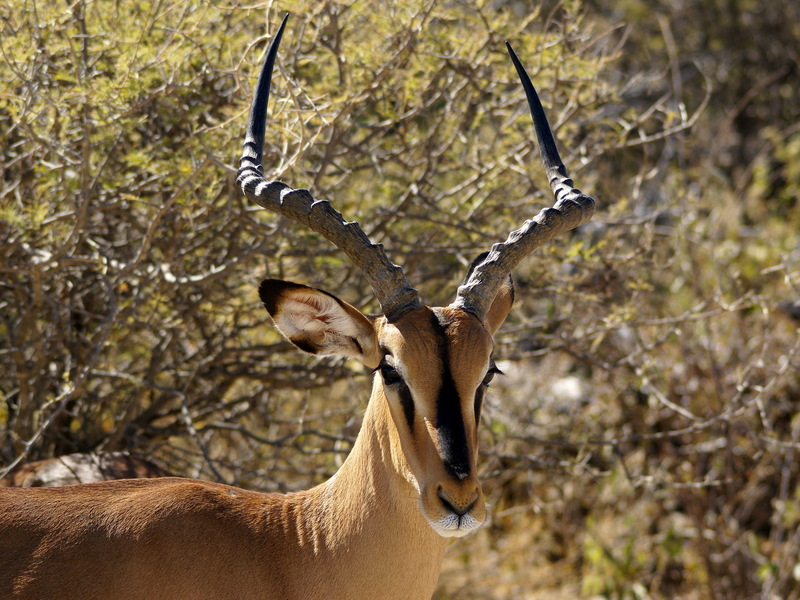Impala (Aepyceros melampus) - Wiki Impala
From Wikipedia, the free encyclopedia
[Photo] "A Black-faced Impala in Etosha National Park, Namibia". Black-faced Impala (Aepyceros melampus petersi) between Olifantsbad and Aus, in Etosha, Namibia. Date 29/06/2007. Author Hans Hillewaert http://commons.wikimedia.org/wiki/User:Lycaon
An impala (Aepyceros melampus Greek aipos "high" ceros "horn" + melas "black" pous "foot") is a medium-sized African antelope. The name impala comes from the Zulu language. They are found in savannas in Kenya, Tanzania, Mozambique, Namibia, Botswana, Zambia, Zimbabwe, southern Angola, northeastern South Africa and Uganda (the source of that country's capital city's name - Kampala).
Appearance
Average weight for an Impala is approximately 75 kilograms. They are reddish-brown in color with lighter flanks, and have white underbellies. Males have lyre-shaped horns which can reach up to 90 centimeters in length. When frightened or startled the whole herd starts leaping about in order to confuse their predator. They can jump distances more than 9 meters (30 feet) and 2.5 meters (8 feet) high. They are prey to almost every large predator.
Habits
Impala are among the dominant species in many savannas. They are gregarious creatures and are usually found in herds, often a male with many females, although an ewe will leave the herd to give birth. Their food consists of a mixture of grasses and leaves. Herds will use specific areas for their excrement. Impala are active during both day and night. Impala are dependent on water, and a herd is normally an indicator of water close by.
Social structure
Young male impala form bachelor herds of around thirty individuals. Females and young form herds of up to two hundred individuals. Mature males hold territories, and lead any female herds that wander into their territory.
http://en.wikipedia.org/wiki/Impala
| The text in this page is based on the copyrighted Wikipedia article shown in above URL. It is used under the GNU Free Documentation License. You may redistribute it, verbatim or modified, providing that you comply with the terms of the GFDL. |
